首先查看一下CentOS版本
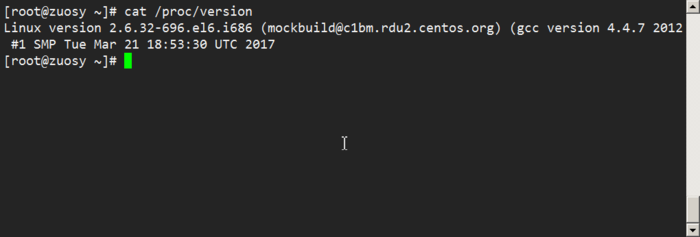
查看网络配置
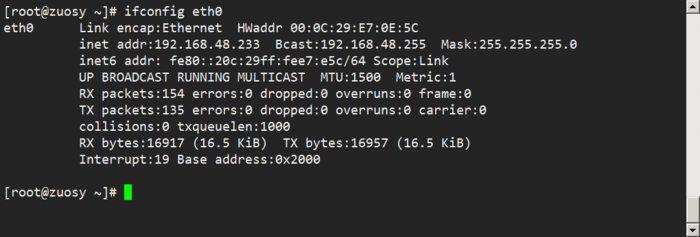
我用虚拟机能上网的。
安装dhcp服务
yum install dhcp -y
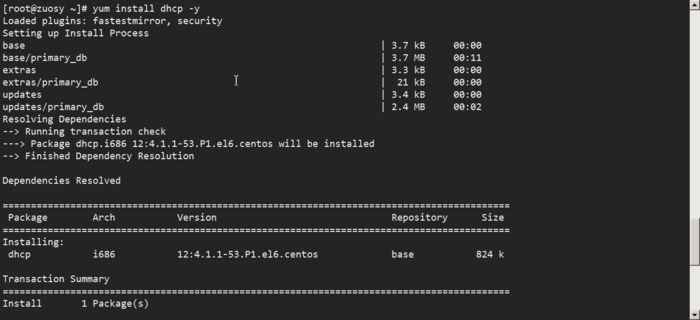
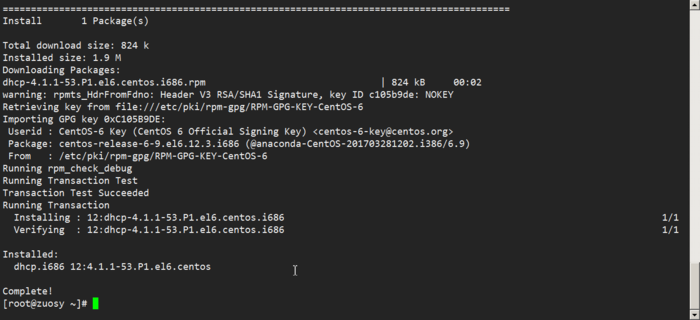
配置dhcp服务器的配置文件
cat /etc/dhcp/dhcpd.conf

它告诉你去 /usr/share/doc/dhcp*/dhcpd.conf.sample 里面去找一个例子
直接重定向 简单粗暴

打开文件后里面的内容是:
1 # dhcpd.conf
2 #
3 # Sample configuration file for ISC dhcpd
4 #
5
6 # option definitions common to all supported networks...
7 option domain-name "example.org";
8 option domain-name-servers ns1.example.org, ns2.example.org;
9
10 default-lease-time 600;
11 max-lease-time 7200;
12
13 # Use this to enble / disable dynamic dns updates globally.
14 #ddns-update-style none;
15
16 # If this DHCP server is the official DHCP server for the local
17 # network, the authoritative directive should be uncommented.
18 #authoritative;
19
20 # Use this to send dhcp log messages to a different log file (you also
21 # have to hack syslog.conf to complete the redirection).
22 log-facility local7;
23
24 # No service will be given on this subnet, but declaring it helps the
25 # DHCP server to understand the network topology.
26
27 subnet 10.152.187.0 netmask 255.255.255.0 {
28 }
29
30 # This is a very basic subnet declaration.
31
32 subnet 10.254.239.0 netmask 255.255.255.224 {
33 range 10.254.239.10 10.254.239.20;
34 option routers rtr-239-0-1.example.org, rtr-239-0-2.example.org;
35 }
36
37 # This declaration allows BOOTP clients to get dynamic addresses,
38 # which we don't really recommend.
39
40 subnet 10.254.239.32 netmask 255.255.255.224 {
41 range dynamic-bootp 10.254.239.40 10.254.239.60;
42 option broadcast-address 10.254.239.31;
43 option routers rtr-239-32-1.example.org;
44 }
45
46 # A slightly different configuration for an internal subnet.
47 subnet 10.5.5.0 netmask 255.255.255.224 {
48 range 10.5.5.26 10.5.5.30;
49 option domain-name-servers ns1.internal.example.org;
50 option domain-name "internal.example.org";
51 option routers 10.5.5.1;
52 option broadcast-address 10.5.5.31;
53 default-lease-time 600;
54 max-lease-time 7200;
55 }
56
57 # Hosts which require special configuration options can be listed in
58 # host statements. If no address is specified, the address will be
59 # allocated dynamically (if possible), but the host-specific information
60 # will still come from the host declaration.
61
62 host passacaglia {
63 hardware ethernet 0:0:c0:5d:bd:95;
64 filename "vmunix.passacaglia";
65 server-name "toccata.fugue.com";
66 }
67
68 # Fixed IP addresses can also be specified for hosts. These addresses
69 # should not also be listed as being available for dynamic assignment.
70 # Hosts for which fixed IP addresses have been specified can boot using
71 # BOOTP or DHCP. Hosts for which no fixed address is specified can only
72 # be booted with DHCP, unless there is an address range on the subnet
73 # to which a BOOTP client is connected which has the dynamic-bootp flag
74 # set.
75 host fantasia {
76 hardware ethernet 08:00:07:26:c0:a5;
77 fixed-address fantasia.fugue.com;
78 }
79
80 # You can declare a class of clients and then do address allocation
81 # based on that. The example below shows a case where all clients
82 # in a certain class get addresses on the 10.17.224/24 subnet, and all
83 # other clients get addresses on the 10.0.29/24 subnet.
84
85 class "foo" {
86 match if substring (option vendor-class-identifier, 0, 4) = "SUNW";
87 }
88
89 shared-network 224-29 {
90 subnet 10.17.224.0 netmask 255.255.255.0 {
91 option routers rtr-224.example.org;
92 }
93 subnet 10.0.29.0 netmask 255.255.255.0 {
94 option routers rtr-29.example.org;
95 }
96 pool {
97 allow members of "foo";
98 range 10.17.224.10 10.17.224.250;
99 }
100 pool {
101 deny members of "foo";
102 range 10.0.29.10 10.0.29.230;
103 }
104 }然后删除 删成这个样子:
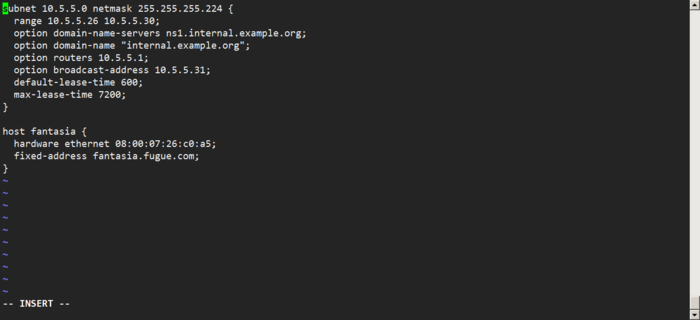
为了方便把这部分贴出来
subnet 10.5.5.0 netmask 255.255.255.224 {
range 10.5.5.26 10.5.5.30;
option domain-name-servers ns1.internal.example.org;
option domain-name "internal.example.org";
option routers 10.5.5.1;
option broadcast-address 10.5.5.31;
default-lease-time 600;
max-lease-time 7200;
}
host fantasia {
hardware ethernet 08:00:07:26:c0:a5;
fixed-address fantasia.fugue.com;
}然后就开始配置吧 假设在一个局域网192.168.48.0配置 分配给host的ip范围是192.168.48.10 192.168.48.200 然后开始搞起
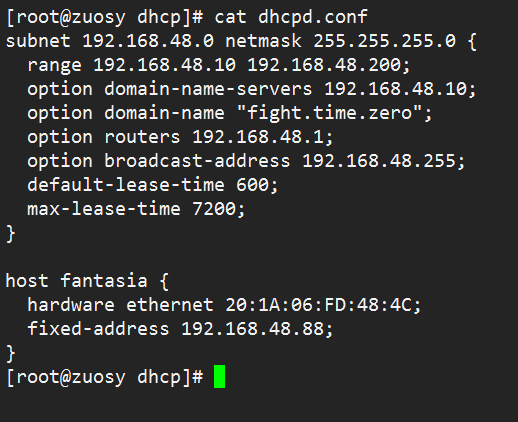
网络接口配置:
vim /etc/sysconfig/dhcpd
DHCPDARGS=eth0
配置一下本地虚拟机的网络

这个样子,我的XShell也就断了
然后虚拟机配置一下桥接模式,这样我的Windows就和虚拟机在一个局域网下了
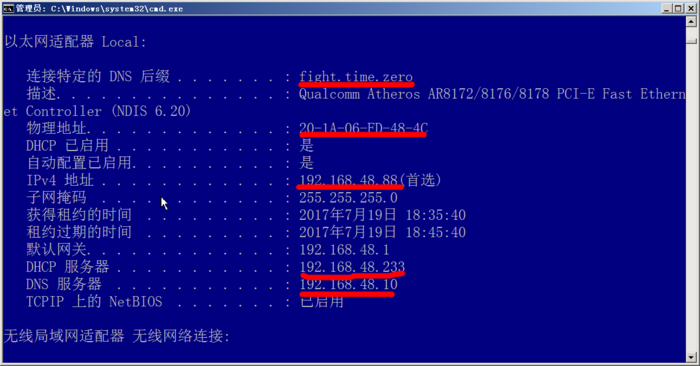
成功了嘿嘿嘿。
但是在这里还是要说以下细节的
本地的Windows网卡要设置自动获取ip自动获取dns
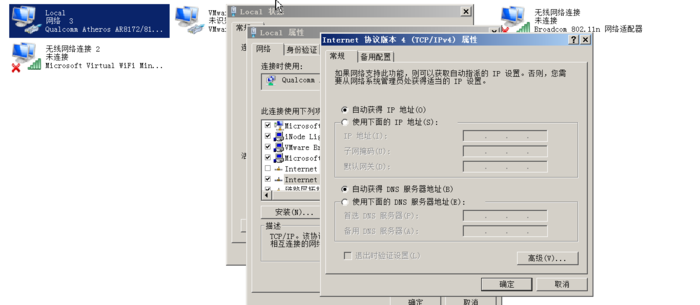
然后要重启一下网卡才能生效,这样最简单粗暴了。
相关文章
标签:服务器技术
- •VMware Workstation Pro 16安装CentOS7超详细图文步骤
- •CentOS7下配置使用JumpServer 堡垒机 (图文教程)
- •CentOS安装jdk的几种方法及配置环境变量方式
- •CentOS忘记密码修改方案以及centos卡在开机登录界面,命令失效的解决方法
- •解决笔记本安装centos7后无法调节屏幕亮度
- •VMware安装CentOS 8.1(CentOS 8系列可参考)的图文详细教程
- •CentOS7 minimal 最小化安装网络设置过程
- •CentOS7下搭建JumpServer
- •CentOS安装rpm包出现冲突时的解决办法
- •Vmware下CentOS7最小化安装方式


